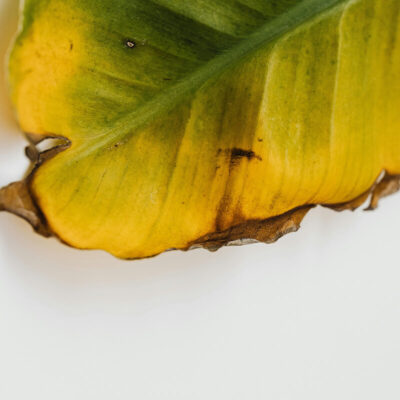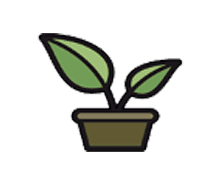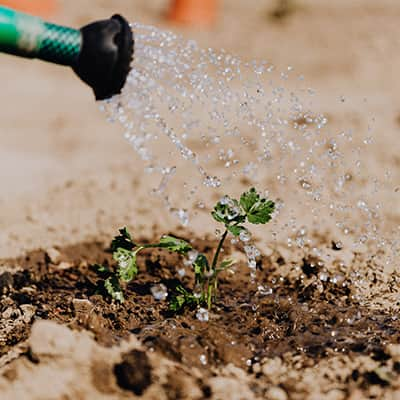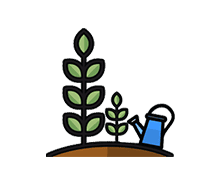Why Are My Plant Leaves Turning Yellow? A Simple Nutrient Troubleshooting Guide

In gardening, the key to success is adapting to the needs of your plants while overcoming the many challenges they face from seed to harvest. While there are many plant problems you can easily solve, there’s one that continually stumps even seasoned gardeners. Yellow leaves can happen for many reasons. However, even with careful watering, sun exposure, and pest control, you may find yourself asking, “Why are my leaves yellow?”
The truth is that many leaf discoloration issues stem from nutrient deficiency. This blog aims to help you understand nutrition and its impact on plant health while also empowering you to address the problem effectively.
Leaf Discoloration 101: Soil pH Levels and Chlorophyll Production
There are many potential reasons why leaves turn yellow. Before we explore the relationship between yellowing and plant nutrients, let’s first address other common causes.
- Overwatering and Poor Drainage: When roots become waterlogged, they suffocate and stop delivering vital plant nutrients.
- Root Compaction: Yellow leaves can be a byproduct of root compaction. When compacted, roots struggle to deliver water, oxygen, and nutrients to the plant.
- Light Issues: Too much or too little light can cause leaf discoloration. Inadequate lighting prevents photosynthesis, while excess lighting can lead to leaf scorching.
- Pests and Disease: Some pest infestations and diseases can transmit pathogens and weaken a plant, resulting in yellowing.
Beyond those factors, yellow leaves can develop due to improper soil pH levels. Plant discoloration happens when leaves lose chlorophyll, which is the pigment that gives leaves their distinct green hue. Chlorophyll plays a vital role in photosynthesis, the process by which sunlight and water convert into energy. When leaf discoloration occurs, photosynthesis cannot take place, and plants can suffer. So, how does it relate to soil pH levels?
Soil pH levels change the bioavailability of plant nutrients. Nutrient availability changes as pH levels move up or down the scale. That’s why plants have specific soil pH requirements. Failing to meet them will deprive your plant of what it needs to reach its full potential.
How to Grow Healthy Plants and Avoid Leaf Yellowing
The best approach to plant care is to understand the ideal growing environment. Study each plant to know how much water and sunlight it needs to reach its full potential. Another essential element of plant care is creating the ideal soil environment.
Perform pH tests and ensure the soil is in the optimal range. Most plants prefer soil that’s neutral or slightly acidic, but exact preferences vary. Amend the soil as necessary and consider using pH-buffered plant nutrients. High-quality nutrients can adjust the pH levels as the soil changes, ensuring your plants always have a stable environment.
Why Are My Leaves Yellow: Plant Nutrient Troubleshooting Guide
What if plants continue to produce yellow leaves, even if pH levels are optimal? If you’ve already ruled out soil pH, watering habits, sunlight exposure, and other common plant problems, the issue is likely a nutrient deficiency.
If that’s the case, you can easily fix plant problems via premium plant foods. Here’s an easy troubleshooting guide to help you understand what deficiencies your plants may be facing.
- General Yellowing: General discoloration on older leaves closest to the stem indicates a problem with nitrogen levels.
- Bright Yellowing Along Leaf Edges: When the edges turn yellow as the inner leaf stays green, the problem is likely a lack of potassium.
- Yellow Patching Between Leaf Veins on Older Leaves: This yellowing occurs on older leaves, starting at the center and moving out. It points to a magnesium deficiency.
- Yellowing Between Leaf Veins on Younger Leaves: When yellowing affects younger leaves on plant tops and branch tips, there may be an iron deficiency.
- Yellow New Leaves: Yellow leaves on new growth point to a sulfur deficiency.
Dealing with yellow leaves can be frustrating. However, you should never ignore them! Treat leaf discoloration as a cry for help. Study the issue, perform soil tests, and use plant nutrients to correct deficiencies. With vigilant plant care, your plants will return to their former green glory in no time!












